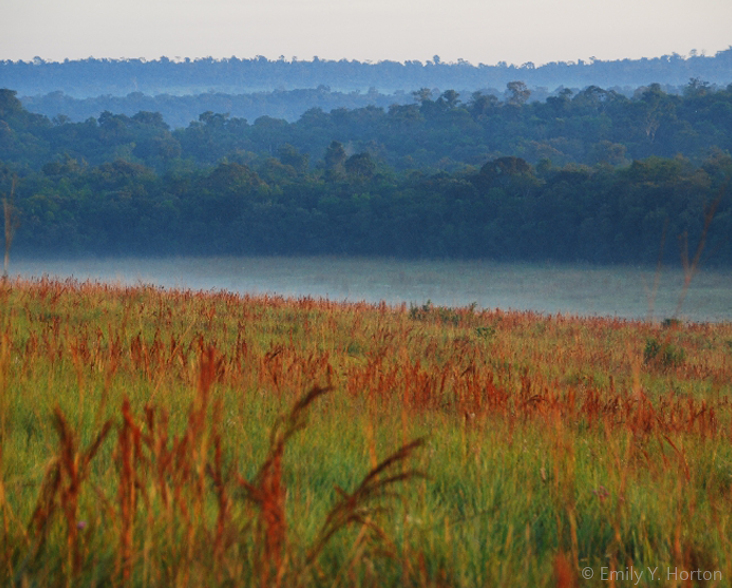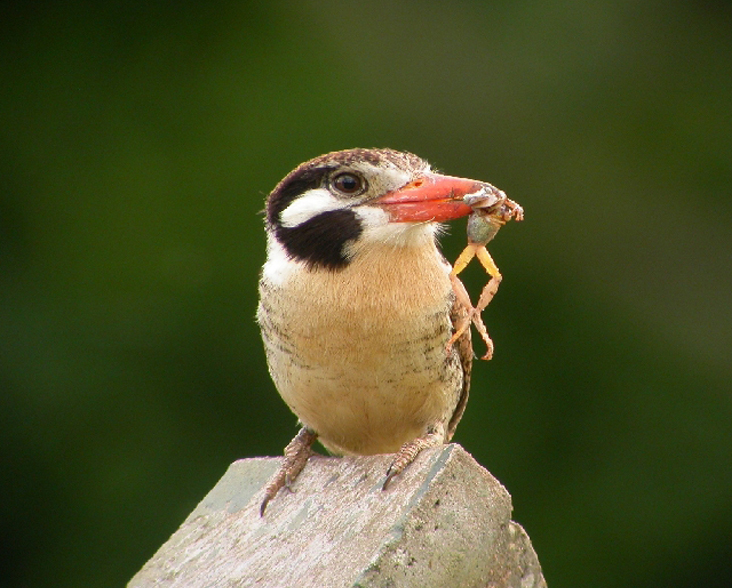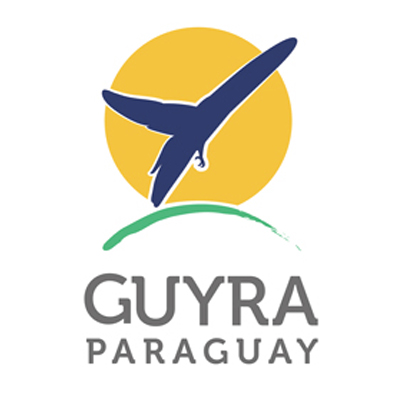Ecoregion: Atlantic Forest
Key Species: White-eared Puffbird, Giant Otter, Jaguar, Lowland Tapir, Maned Wolf, Bushdog, Harp Eagle, Oncilla
San Rafael is one of the best remaining patches of Atlantic Forest in the eastern part of Paraguay. A core area of San Rafael has been purchased by World Land Trust (WLT) partners, Guyra Paraguay, and is now well protected.
Project PartnerGuyra Paraguay

Conservation Action
This region consists of a mosaic of standing forest, natural grassland and areas cleared for agriculture. The WLT reforestation programme is supporting expansion of forest blocks.
The programme focuses on relieving fire pressure, and assisting the re-establishment of Atlantic Forest species with enrichment planting and assisted natural regeneration.
In 2006-2007, work focused on regenerating three paddocks over a 12 hectare area, through the regular clearing of vegetation combined with the planting of 12,000 trees. There were 17 native tree species identified from the surrounding forest for planting, and seedlings were produced in a village nursery. In 2008, work shifted to a 50 hectare area. It was discovered that by removing fire pressure, a rich variety of tree species were able to grow in this part of the forest. Since then, 40,000 trees have been liberated in this area.
Conservation work at San Rafael is funded by the Paraguay Forest Conservation Project: a partnership between local communities, WLT, Guyra Paraguay and Swire Pacific Offshore. It is comprised of two key elements, the first at La Amistad, San Rafael, and the second in the Chaco-Pantanal at Tobich.
Biological Importance
The forest of San Rafael is, at 70,000 hectares, one of the largest patches remaining and is of outstanding biodiversity importance. It is largely comprised of moist, semi-evergreen ‘Upper Parana’ Forest, further diversified by a mosaic of natural grasslands (outliers of the Pampas) on its western edge.
The San Rafael Important Bird Area (IBA) was identified in 1997 as only the second IBA in Latin America. It is the most important site for threatened and endemic Atlantic Forest birds in Paraguay. There are 26 bird species of conservation concern, along with 27 mammal and 71 plant species. Birds include Harpy Eagle (Harpia harpyja), White-eared Puffbird (Nystalus chacuru), Bare-throated Bell-bird (Procnias nudicollis), and Black-fronted Piping-guan (Pipile Jacutinga).
Many large, threatened mammal species are found here, such as Giant Otter (Pteronura brasiliensis), Jaguar (Panthera onca), Lowland Tapir (Tapirus terrestris), Maned Wolf (Chrysocyon brachyurus), Bushdog (Speothos venaticus) and Oncilla (Leopardus tigrinus)
Within San Rafael IBA, 95 per cent remains in its natural state. Of this, 91 per cent is semi-evergreen lowland tropical forest, 3 per cent is savanna, and 1 per cent is scrub. The remaining 5 per cent is used for agriculture. San Rafael suffers from widespread illicit timber extraction and patchy clearance.

Community involvement
The project concentrates on the campesino community of La Amistad, resettled under the national Agrarian Reform programme, on a strip of 1,182 hectares (ha) penetrating into the heart of the forest.
Given that the La Amistad community welfare is compromised by low incomes, the incentive to clear additional forest is extremely strong. This project thus aims to reward the community for the Ecosystem Services their forest areas provide, and to facilitate improvements to farmed areas so as to enhance incomes.
Individual participation is entirely voluntary, with community members opting to contribute forest parcels to the community forest reserve, in exchange for payments.
An agricultural extension service will be provided to assist community members to adopt farming practices that enhance yields on already-converted land in a sustainable way, thus increasing farm stability and income and reducing the incentive to expand cultivated areas.
The 70,000 hectares of grassland and forest at San Rafael absorb rainwater and release it slowly into watercourses, thus playing a key role in water security in the wider region.
